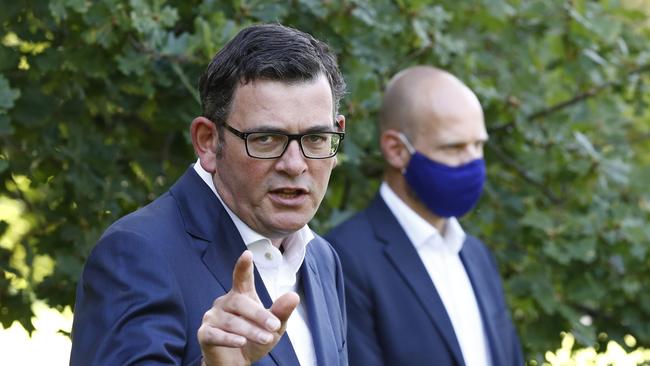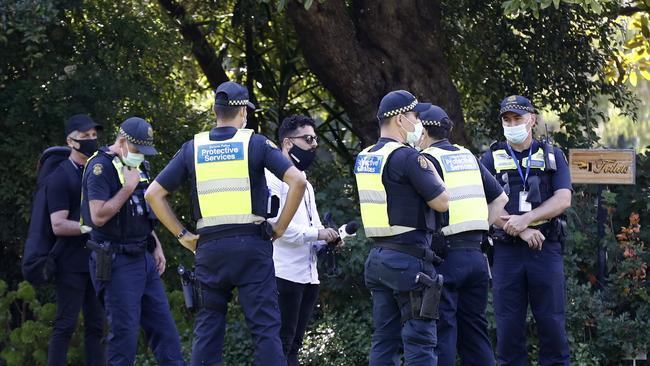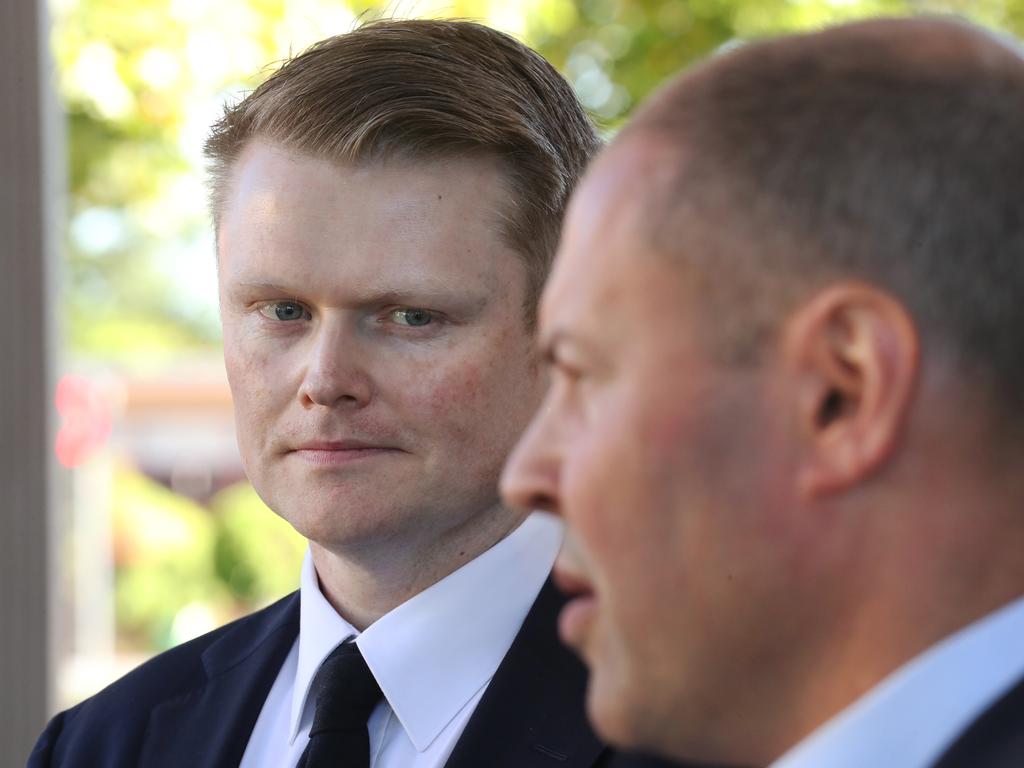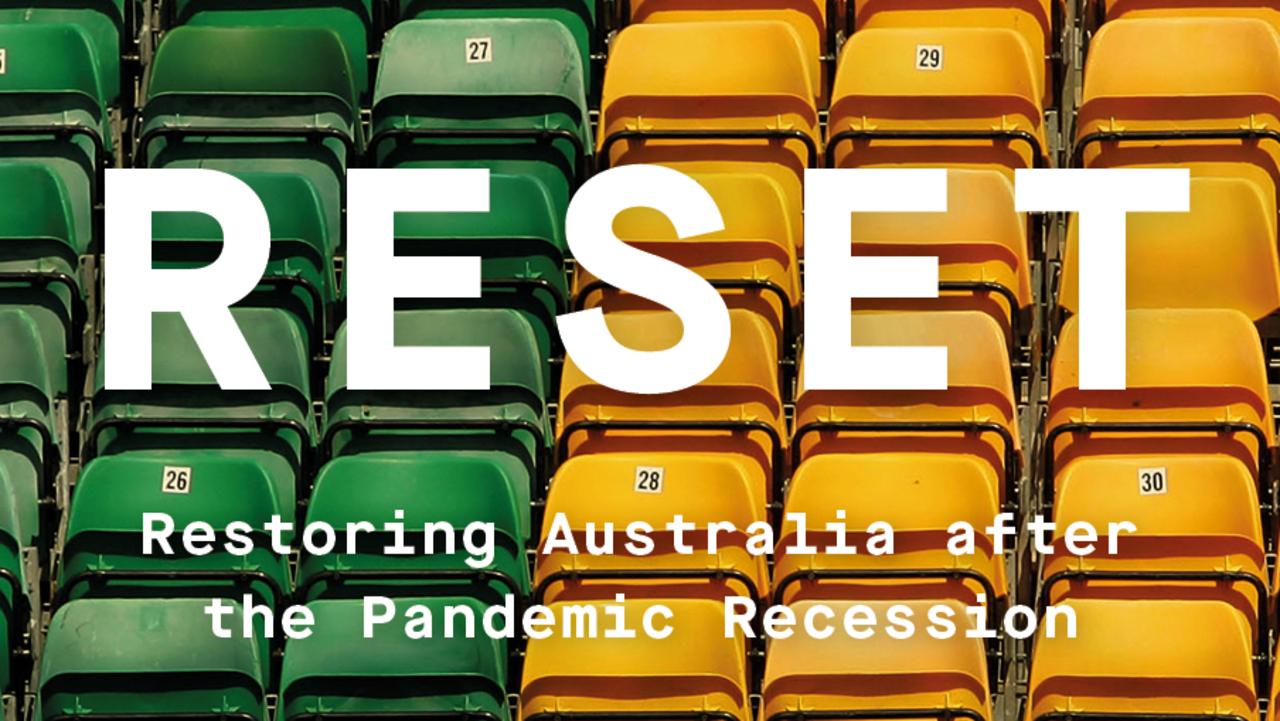Lay off Victoria, it’s still bleeding
For those living outside the southern state, be very clear; there is emotional fatigue in Melbourne. We’re not ready for a blame game.

Mass murder, civil war, earthquakes, a tsunami, terrible bushfires and floods, terrorism, child sex abuse, even an aircraft hijacking before they were in vogue.
It taught me many valuable lessons about life that are deeply relevant in our pandemic world.
Principally, never tell a victim or their community how they should think and never try to guess how people will respond over the longer term.
Lockdown 3.0 has ended in Victoria with the usual ill-informed cross border assumptions and even, lamentably at times, the undermining of the health response. Like all big stories, the facts speak for themselves.
Aside from creeping and understandable anger among those badly affected in the private sector, the bulk of the community response seems to be surprisingly apolitical, almost as if the community is still weighing its options.
The baseball bats are not yet out and the reasons for this are complex. The facts are straightforward enough but the basics are worth revisiting.
While Victoria has not suffered in any way near countries such as Belgium, Britain or the US, the impact of the long-term and draconian 2020 lockdown on a free range society was profound for many and will resonate for years.
Most of the 820 people who died to the virus in Victoria did so during the second wave breakout of hotel quarantine and the Andrews government bears responsibility for it.
The second wave was because of a series of official cock-ups, most of which relate to neglect in the state’s health department or a general failure to set up and run an appropriate hotel quarantine system.
The virus, which has killed nearly 2.5 million worldwide, is also self-evidently terribly infectious and dangerous for mostly old people. The pandemic produced the sharpest downturn in the Australian economy in memory and only unprecedented government largesse stopped an even bigger collapse. The long shutdown of the Victorian economy devastated some industries and the impact is about to worsen when the last of the COVID welfare payments disappear.
But not even this shadow seems to be turning the community against Labor.
The virus calamity is by no means the worst thing I have seen or covered but there is no doubt that Victoria is a traumatised community, looking for help from government that is all about stopping another long-term shutdown. Not much else matters to voters.
The pandemic is not a blunt force, over-in-a-day event like a rampaging bushfire, rather a slow burn with no clear finish line.
For those living outside the southern state, be very clear; there is emotional fatigue in Melbourne. Instinctively, the ABS job numbers are masking deep pockets of despair, although the unemployment rate of 6.3 per cent is below the national average and way below most people’s estimates (including mine) in the back half of 2020.
Every household has its own story. The lockdowns have been very personal. My wife’s industry – global travel – has been gutted, at least temporarily, bringing with it financial uncertainty to our household. Our three children struggled in their own ways during the long lockdown and it will be their stories to tell when they are adults. It was an awful day when my 10-year-old, arguably the easiest child to raise in global history, wept one morning a few months into Lockdown 2.0 while we were kicking the football during our exercise routine.
“I’m just so stressed,” he said, “I can’t keep up.” He was talking about school and it’s a fair bet that it will take years for his generation to catch up. They dread even talking about lockdowns.
Thankfully (in a perverse way) my mother died seven weeks before Lockdown 2.0, but it meant that, for most of 2020, her possessions lay untouched in her house in South Australia and unprotected because of the locked borders.
This is a very small personal hurdle that nonetheless built a false sense of failing her memory.
My eldest son was a frontline worker; in the first lockdown we pulled him out of his job because it posed the second greatest risk of the virus entering the house. (The greatest risks were my trips to the worst-affected suburbs, ground zero if you like, of the pandemic in Australia).
In the second, extended lockdown, we sent him back into that highly exposed job because we judged it was better that he had a goal and an interest. Remember there were more than 700 new cases a day at the height of the pandemic. It was the right decision to keep the young bloke occupied, but it may not have been.
These are very hard calls to make as parents when health – physical and mental – are at play; they are why millions don’t want a third wave or Lockdown 4.0.
As Lockdown 2.0 wore on it became much harder to encourage older children to make the best decisions. In the wealthy suburb I am lucky to live in, teenagers who had nowhere else to go, gathered to social distance in parks to interact.

As in all crises, the underworld finds a way. One night a gang dominated by violent teenagers, assaulted several children and stole my son’s jacket. A girl was hit and one boy was hospitalised, all in the pursuit of North Face apparel. Put that down to COVID-19 as well.
These are all, in their own way, small beer when factoring in the challenges faced by frontline workers, or the disproportionate economic pain forced on those in insecure work. Certainly minor compared with life in a third world slum. But the virus, when analysed geographically in Melbourne, hammered the underclass hardest.
So why hasn’t Victoria lined up aggressively against Daniel Andrews in the manner it did against Labor’s Joan Kirner in 1992?
If an election were held today, Labor would gallop home, with Andrews leading 55 per cent to 45 per cent on a two party-preferred basis, according to informed sources. It already has a huge majority in the 88 seat parliament and, at least so far, voters still like and trust him. The Coalition has a paltry 27 seats.
What looks like a stable job market, against the odds, will be a significant positive for Labor and, fundamentally, it feels like the electorate has factored in Labor’s mistakes.
At the same time, bubbling just below the surface, there has been relentless internal pressure on state leader Michael O’Brien, at the same time the Liberal Party is being smashed by arguably its worst internal wars in its history.
This is fuelling the perception inside the beltway that the Coalition is a long way from governing. Sections of the party are openly trawling for a new leader, with potential candidates being discussed including Sky News’s Peta Credlin, former leader Matthew Guy and Upper House MP David Davis.
Those wanting to boot out O’Brien, who is actually doing a competent job in the toughest circumstances, are likely to fall to Guy because the other two options are difficult to execute.
Credlin is outside the parliament, would have more interest in Canberra and would be well aware victory at the next election is, at best, very difficult. Davis is in the wrong chamber.
The Liberal Party in Victoria has been in power for just four of the past 21 years (soon to be 22) and unfortunately it has fuelled the perception of a one party state led by Andrews.
Andrews’ government has made some terrible mistakes and commonsense says there will be a backlash of some size against Labor when it goes to the polls at the end of 2022. But never forget how short the modern attention span can be.
While the backlash against Jeff Kennett didn’t surface in the public polls until very late in 1999, in the months before he lost, internal research was certainly showing him vulnerable. I’ve read some of it.
But in the end, voters are tightly wound and focused on their own four walls, the walls that closed in on them during Lockdown 2.0. It’s a form of trauma as the community tries to ward off the possibility of another long term lockdown.
To that end, politics remains largely irrelevant, which plays well for the incumbent.
People are generally not ready for the blame game, craving instead nothing more than freedom of movement they have largely had over summer. So lay off. Victoria is still bleeding.
John Ferguson has reported and commented on every Victorian government since John Cain.







A black cloak of tragedy was wrapped around a lot of my early reporting.